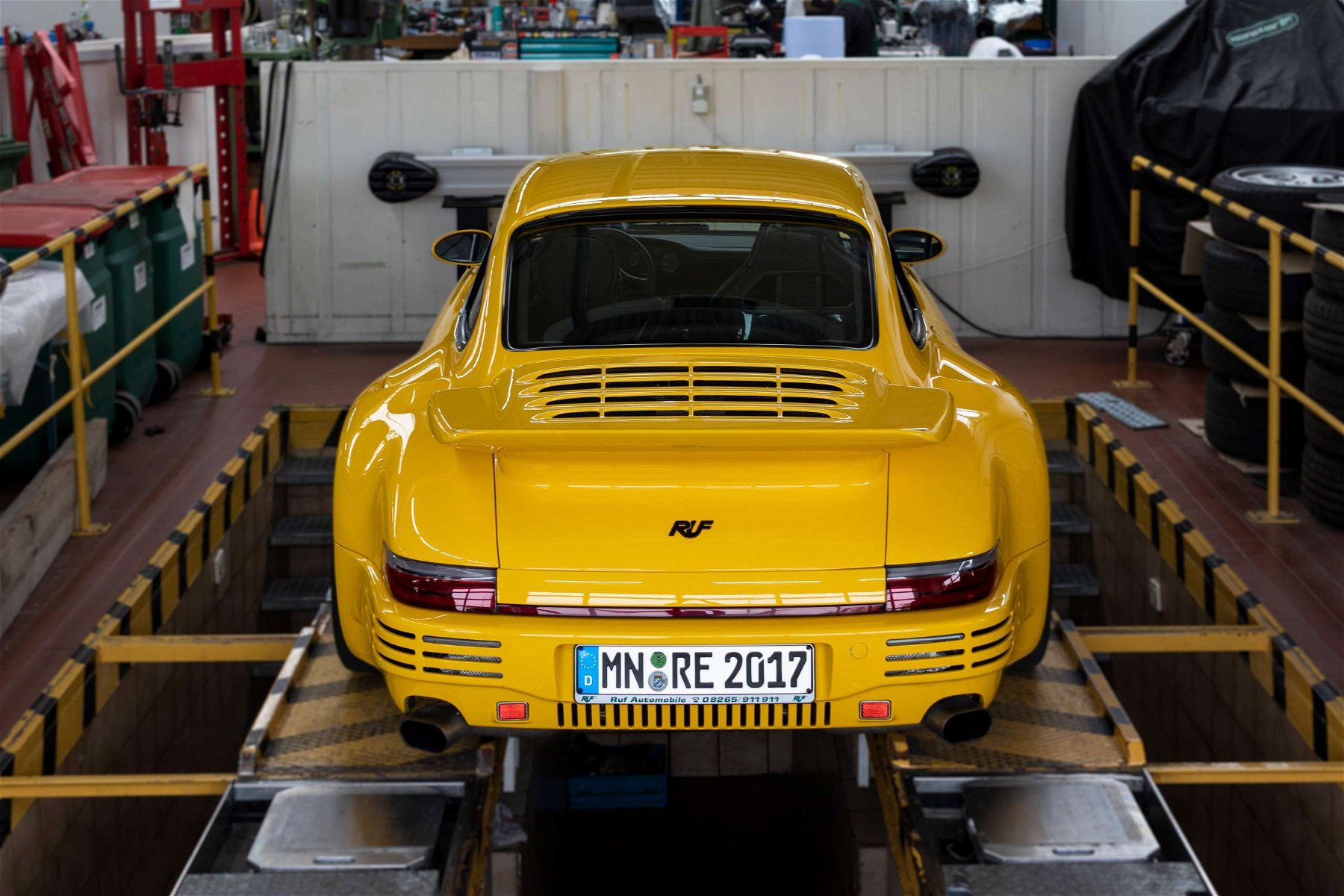
There are not many companies that have done the transition from a tuner to a car manufacturer. Even fewer of them have been supplied by manufacturers with bodyshells for the production of their own vehicles. In this elite circle, RUF Automobile is probably the best known player. We were recently allowed to take a look behind the scenes at the company headquarters in Pfaffenhausen. There, we were able to marvel at how the family business has made it from a renowned Porsche tuner to a manufacturer of exclusive super sports cars with its own carbon fiber monocoque.
The tranquil village of Pfaffenhausen with its 2,600 inhabitants is just over an hour’s drive west of Munich. At the town entrance, there is a roundabout. Besides it is the Mindelheimer Straße 21. This address is world-famous, a place of pilgrimage for Porsche fans, so to speak. Because here, in a conspicuously down-to-earth building, is the headquarters of RUF Automobile. Diagonally opposite – also belonging to RUF Automobile – is the Porsche Service Center Pfaffenhausen.



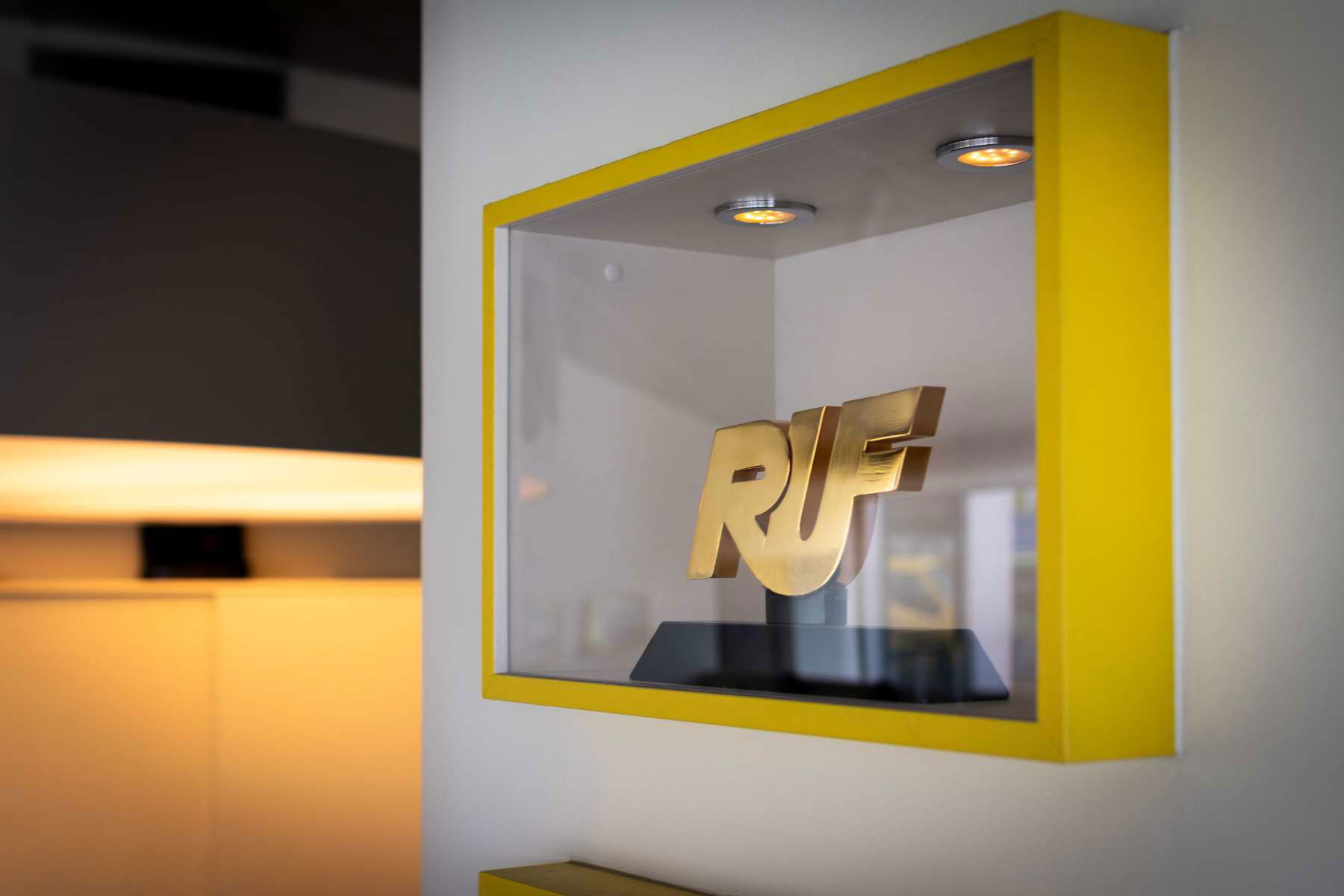
Alois Ruf Jr. – owner and managing director since 1974 – has transformed his parents’ business from a car repair shop with a service station into a world-renowned car manufacturer. The fact that RUF Automobile became more than just a tuner was to a certain extent also due to Porsche. RUF’s power cures for Porsche sports cars had become too much. Porsche did not want to and could not accept liability claims, so Alois Ruf pushed for recognition as a manufacturer. RUF has been listed as an automobile manufacturer by the German Federal Motor Transport Authority since 1981.
Behind the front door awaits a seating area, a round counter and bustling activity. The scenery is tidy, almost plain… if it weren’t for the decoration. In the entrance of RUF Automobile stands a beautiful dark green RUF SCR, next to it an honest Porsche 993 Cabrio, proudly bearing traces from an eventful life. A RUF Turbo 3.3 engine also stands as a matter of course on an engine stand in the entrance hall. On the small wall shelves, RUF displays detailed model cars, historical pictures and memorabilia. The boss is an avid collector, and it shows. The sense of detail is also unmistakable – coffee cups, sugar sachets…. all RUF-branded.
One thing is immediately apparent: the product is the focus, above everything else. And this impression continues in the workshop. Development engineer Rafael Riethmüller takes us straight there. Past the offices of the development department, the path leads to the production hall. Everything has its place, the atmosphere is calm and concentrated. This is where masters of their trade work on absolute dream cars.


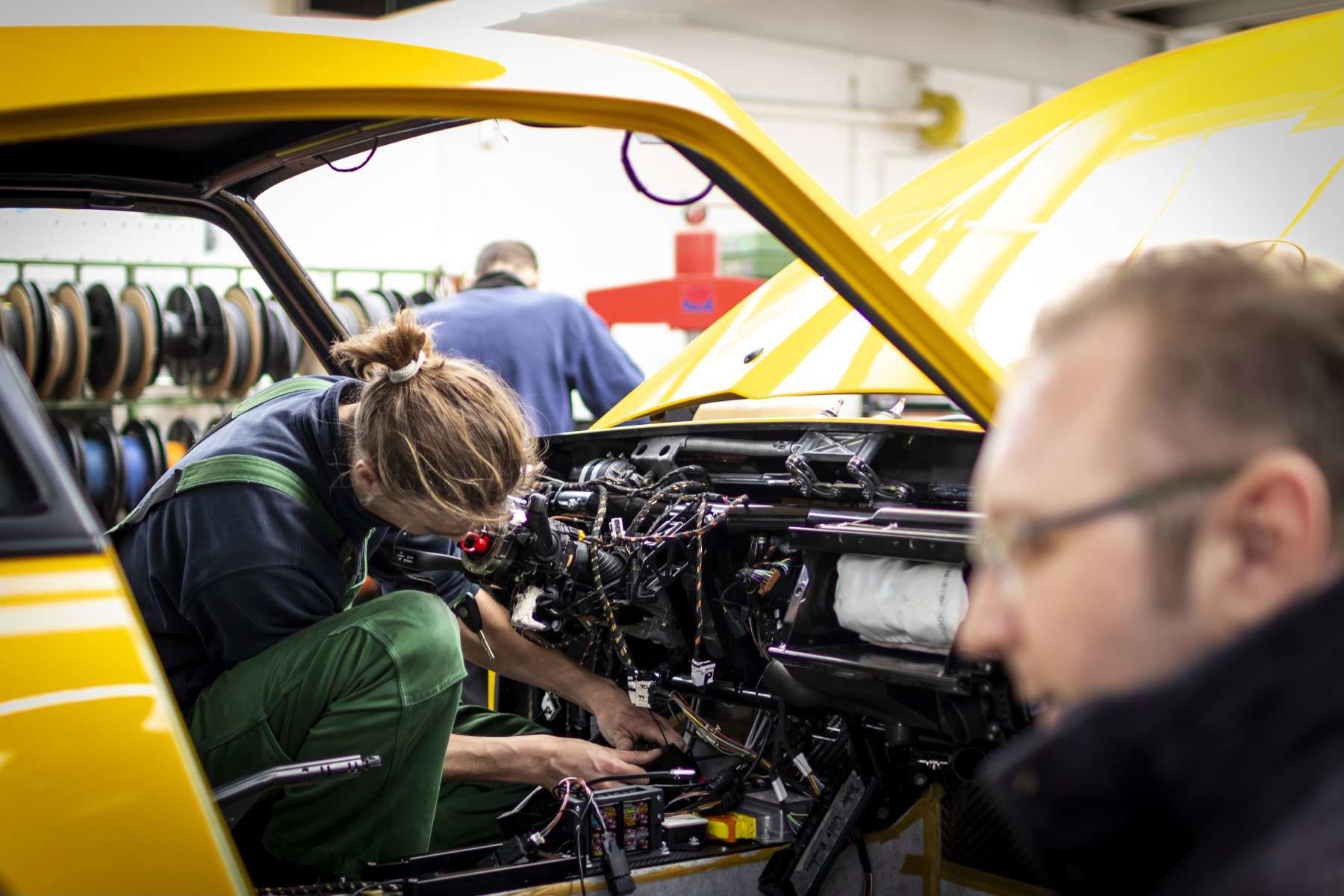
The first cars from Pfaffenhausen were the RUF Turbo 3.3, the RUF SCR (Sport Carrera RUF) and later also the CTR (Group C Turbo RUF), better known as “Yellowbird”. With this car RUF Automobile became world famous overnight. In 1987, the American press tested the latest squad of supercars at the VW proving ground in Ehra-Lessien. The RUF CTR was the only car painted yellow and left all the competition – among others Porsche 959 and Ferrari 288 GTO – with 339 km/h behind. This made the RUF CTR the fastest production car in the world. Without further ado, the US journalists gave it the nickname Yellowbird.
“In addition to manufacturing new RUF CTR Anniversary and SCR, we also do conversions and restorations for our customers here”, Riethmüller tells us. We stroll past a brand new RUF SCR that is just getting its interior. On a stage stands a Porsche 993 that is to be completely converted to RUF CTR. A few meters away is a RUF CTR Anniversary, its seat covers and door panels attracting our attention. “This is classic Dirndl fabric”, Rafael means to us. “Interior color schemes and customization have become much more sophisticated since the advent of Porsche 911 backdates. In the past, the focus was more on technology and power.”
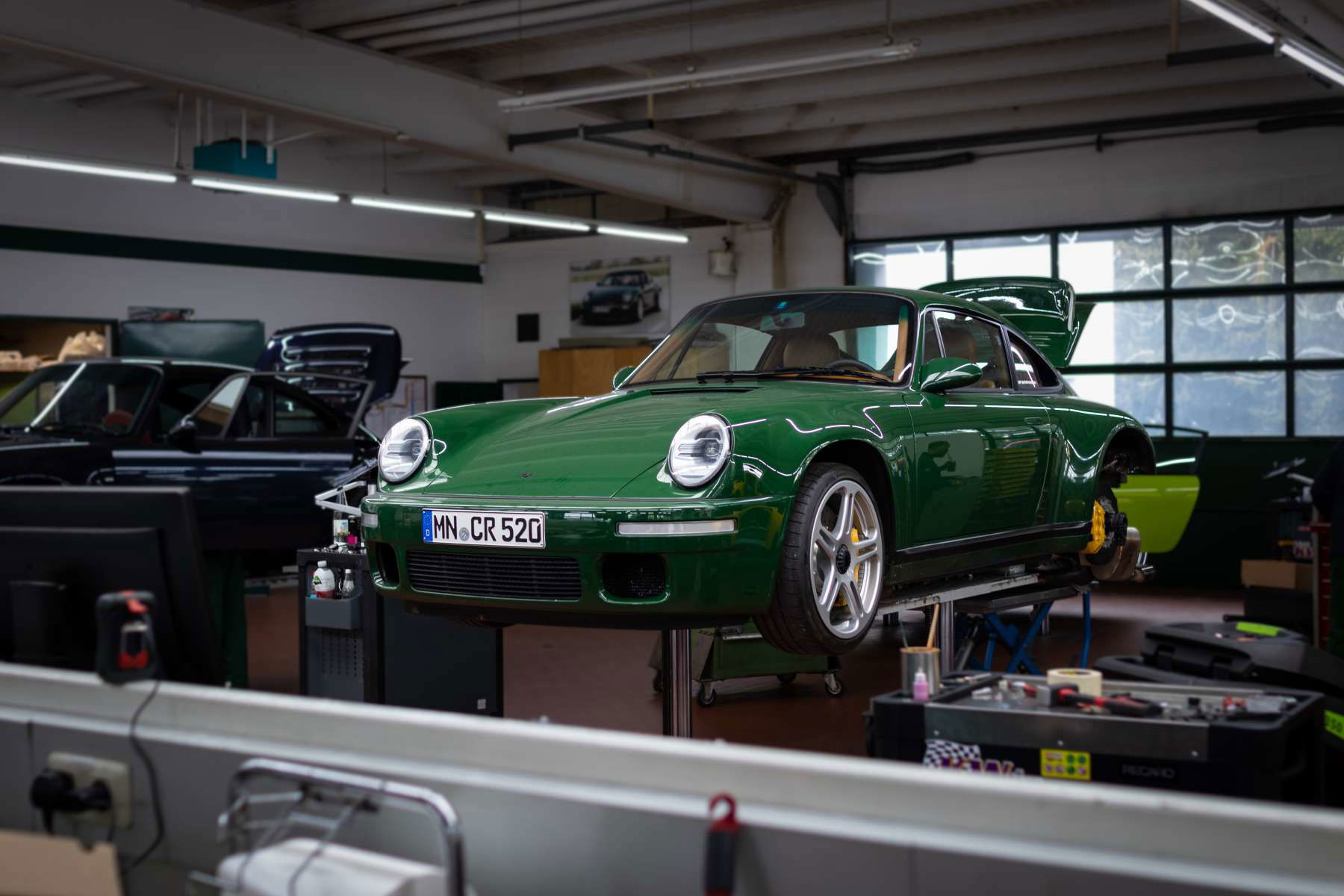
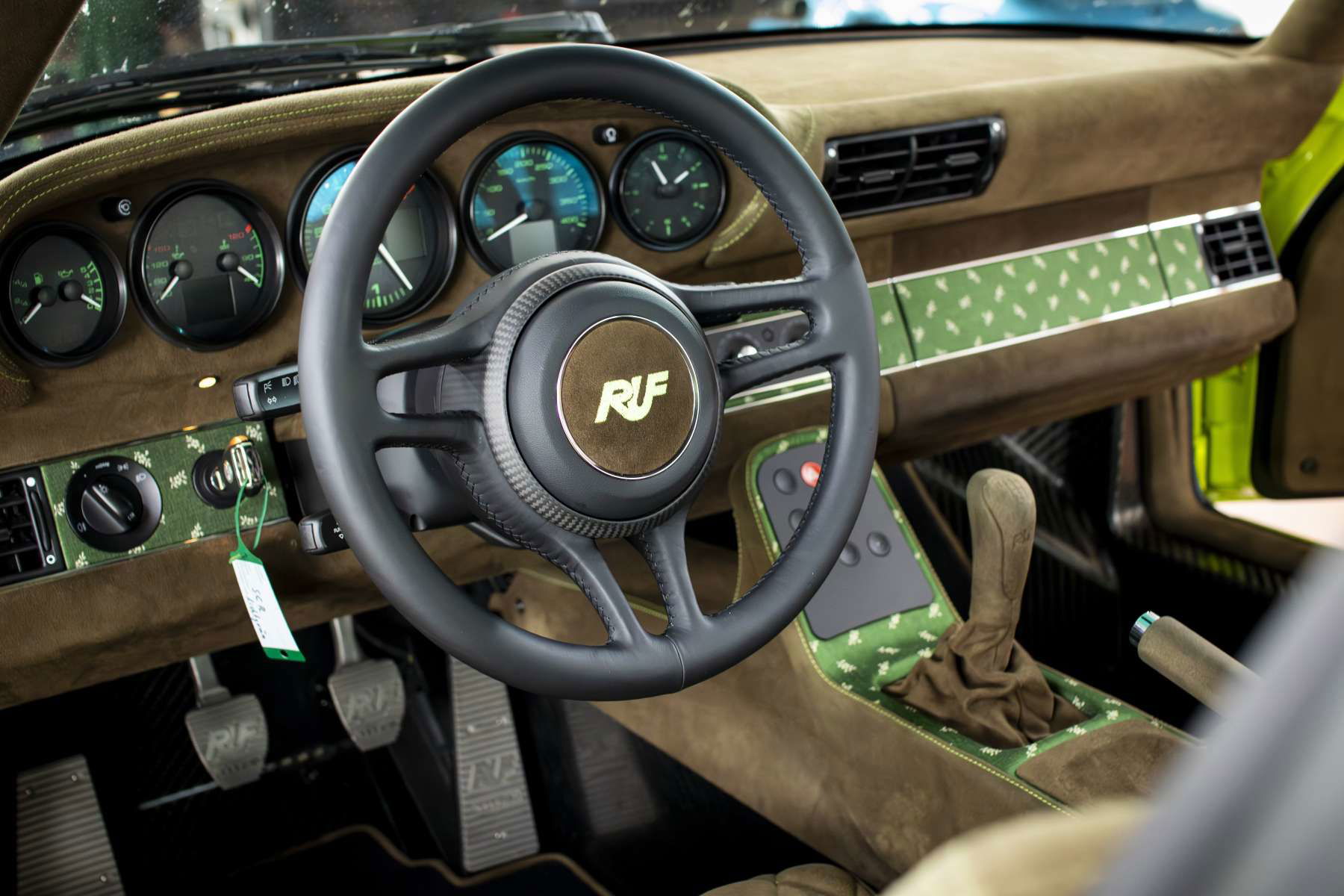
However, the technology at RUF is simply impressive. Because what looks similar to a Porsche 964 here has nothing to do with the original. “The outer skin is made entirely of carbon. Its roof structure weighs 13 kilograms, including the A and C pillars”, carbon-fiber expert Simon Laure explains to me. I can lift it on my own without any problem. Underneath, there is no longer a Porsche chassis, as in the earlier RUF models. Instead, a carbon monocoque forms the basis of the RUF CTR Anniversary and SCR. It was the logical further development of the RUF CTR 3’s tube frame on top of which an integrated steel safety cell is built. This will later not be visible from the inside. Subframes are bolted to the front and rear.
Developing such a chassis to production readiness takes a lot of time. But not at RUF Automobile. The development took only three years. “The monocoque gives us a lot of flexibility for the future. It can be used for both rear and mid-engine layouts. In addition, the chassis configuration with push-rod dampers, longitudinal to the direction of travel, would not have been possible at all with regular Porsche chassis,” Rafael Riethmüller summarizes the thinking behind the monocoque.


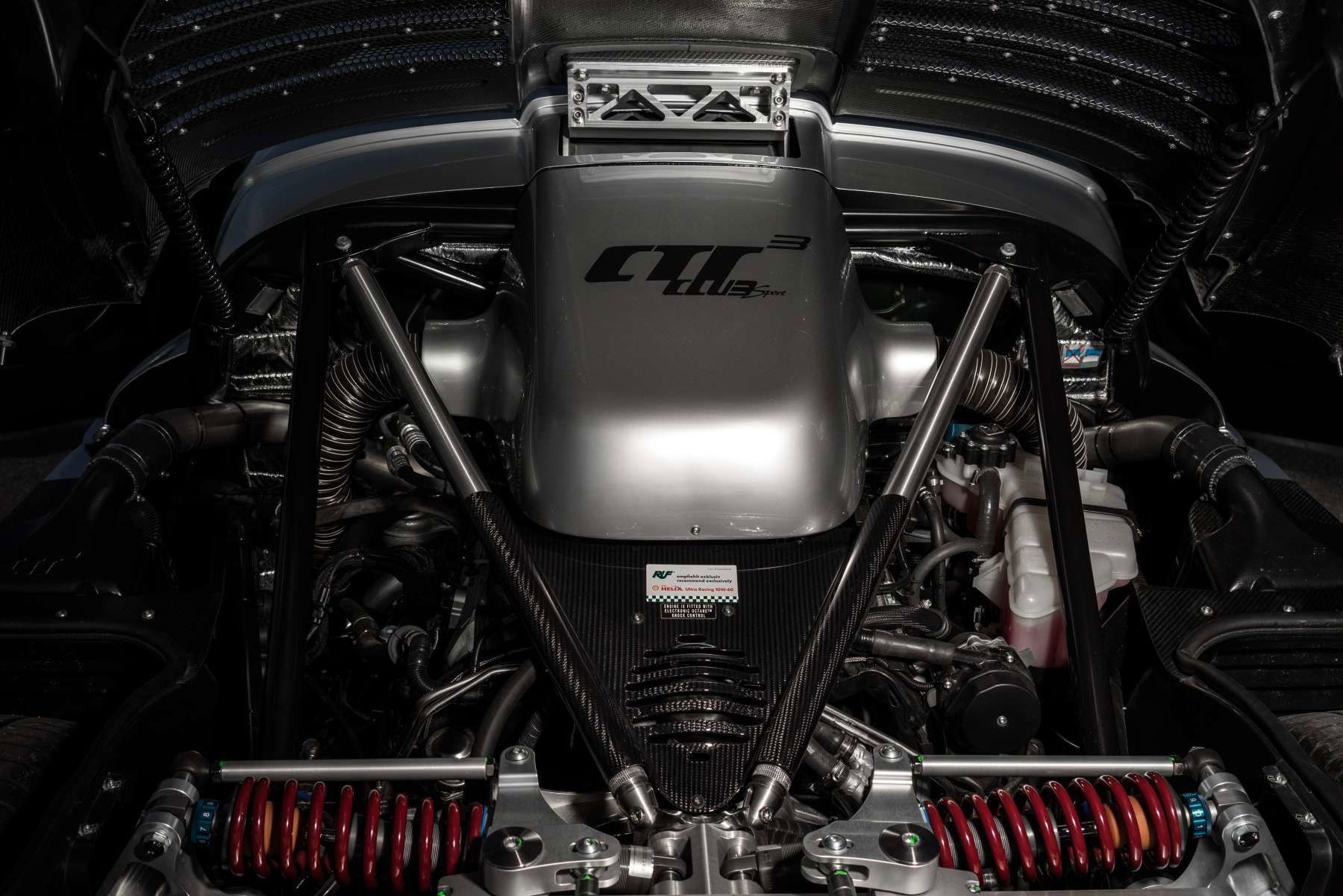
This special damper configuration is otherwise reserved for racing cars or the most exclusive supercars, such as the Porsche Carrera GT or 918 Spyder. In combination with the very stiff chassis, it minimizes body roll. The handling is therefore not comparable with that of an air-cooled Porsche. Instead, we’re talking about the very finest, state-of-the-art technology packed into a classic-looking shell.
At the other end of the workshop we see the RUF CTR Anniversary prototype. RUF presented this projectile in 2017 for the 30th anniversary of the Yellowbird. It stands on the scales, right next to the engine department’s assembly line. Here, RUF builds its own water-cooled 3.6 liter six-cylinder boxer engine. Its origins can be traced back to Hans Mezger‘s design. RUF modernized it in terms of stiffness, cooling and weight. The four-valve engine shines with racing technology. Exhaust system made of Inconel, like in Formula 1, plus titanium connecting rods and forged pistons. These are the ingredients for teasing out over 700 hp from the CTR engines.
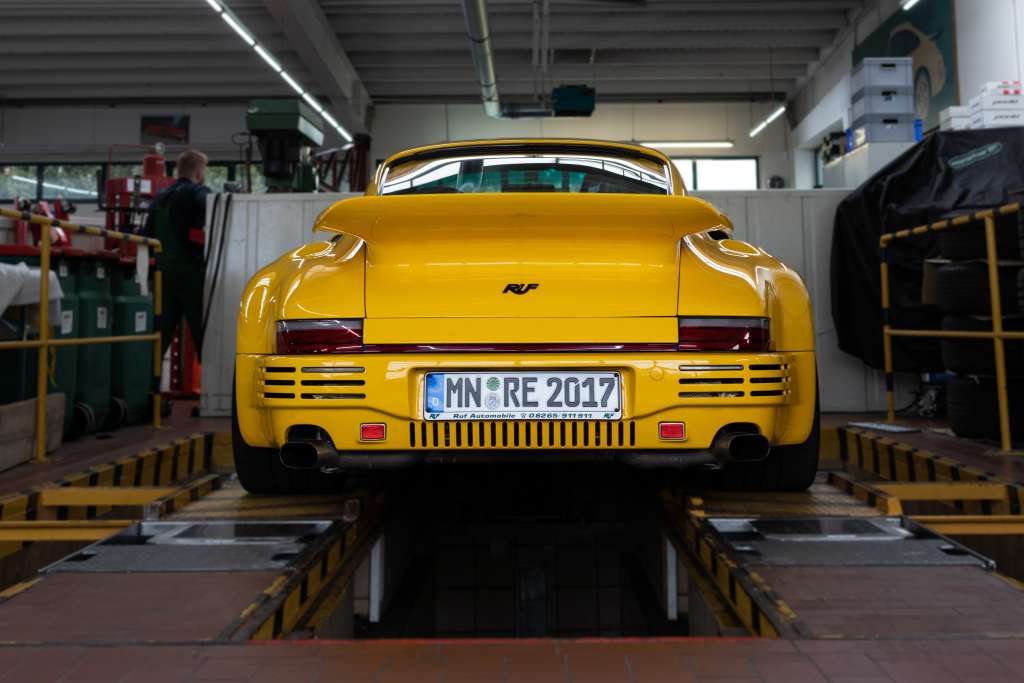
As a car manufacturer, RUF is responsible for the complete homologation of the vehicles itself. Exhaust and noise measurements as well as crash tests are an absolute must to make the car road-legal. Especially emissions are a big challenge for the small manufacturer. Emission and noise limits are already difficult to meet. However, meeting these requirements is still manageable thanks to special catalytic converter coatings. Rafael Riethmüller, on the other hand, reports a surprising stumbling block: “The main problem is tire rolling noise. Its limits are very difficult for us to comply with below a certain ambient temperature.”
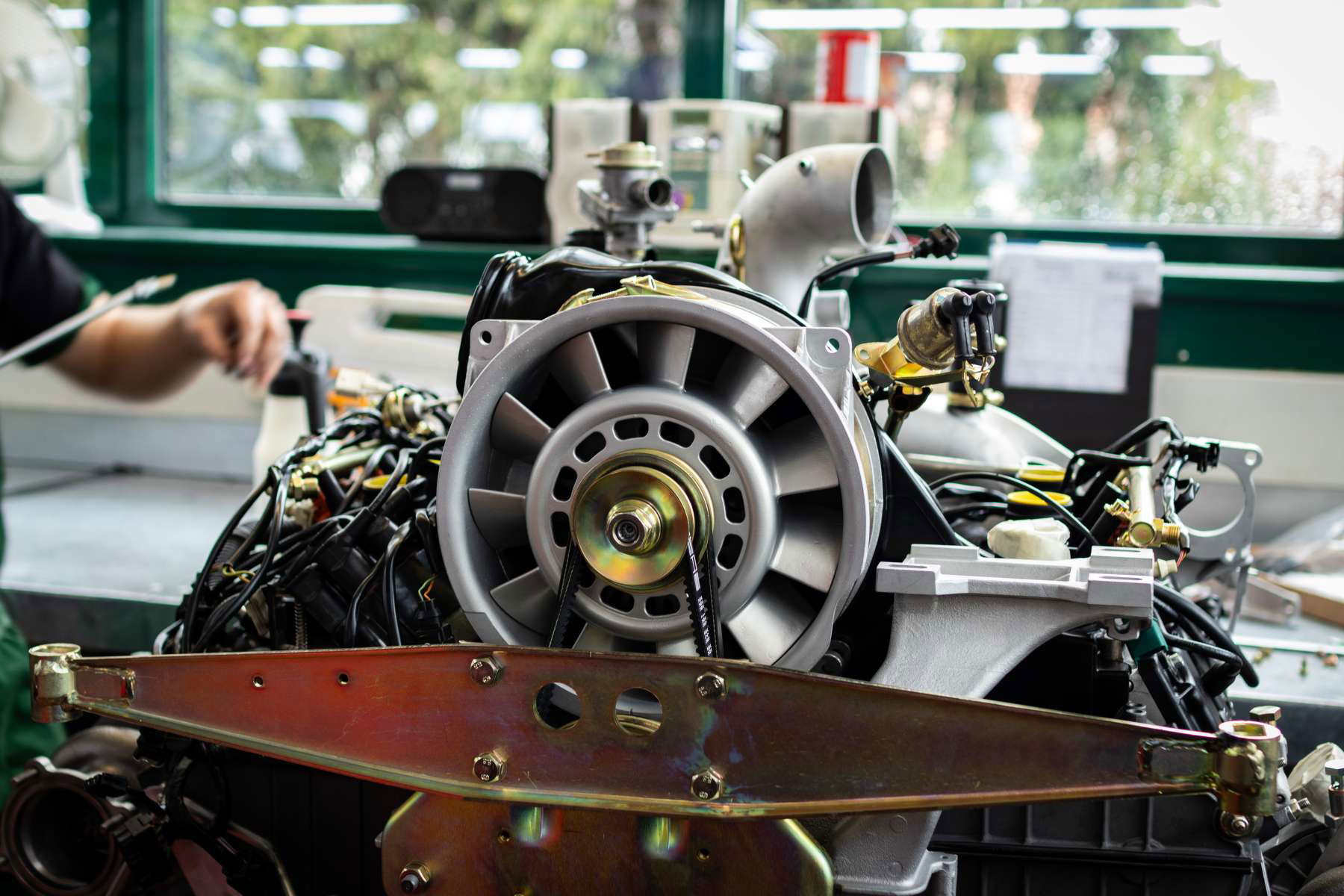
Material choices and chassis design sound as if RUF had Nürburgring records in mind chase. But that’s not the focus at all, Riethmüller explains to us. “In a RUF, the focus is on emotional driving. That’s why we want to offer as analog a driving experience as possible. The fact that our vehicles also do well on the race track is more of a byproduct.”
And they do it damn well, as an anecdote from the ’90s shows. Brothers David and Steve Beddor ordered two RUF CTR2 Sport for the 1997 Pike’s Peak race. Unlike the competition, these 702-hp 993-based RUFs were not only FIA homologated. Both cars were even street legal and went to the Race to the Clouds on their own axles! There they finished second and fourth overall. A better statement for the quality of the own vehicles could hardly be made.

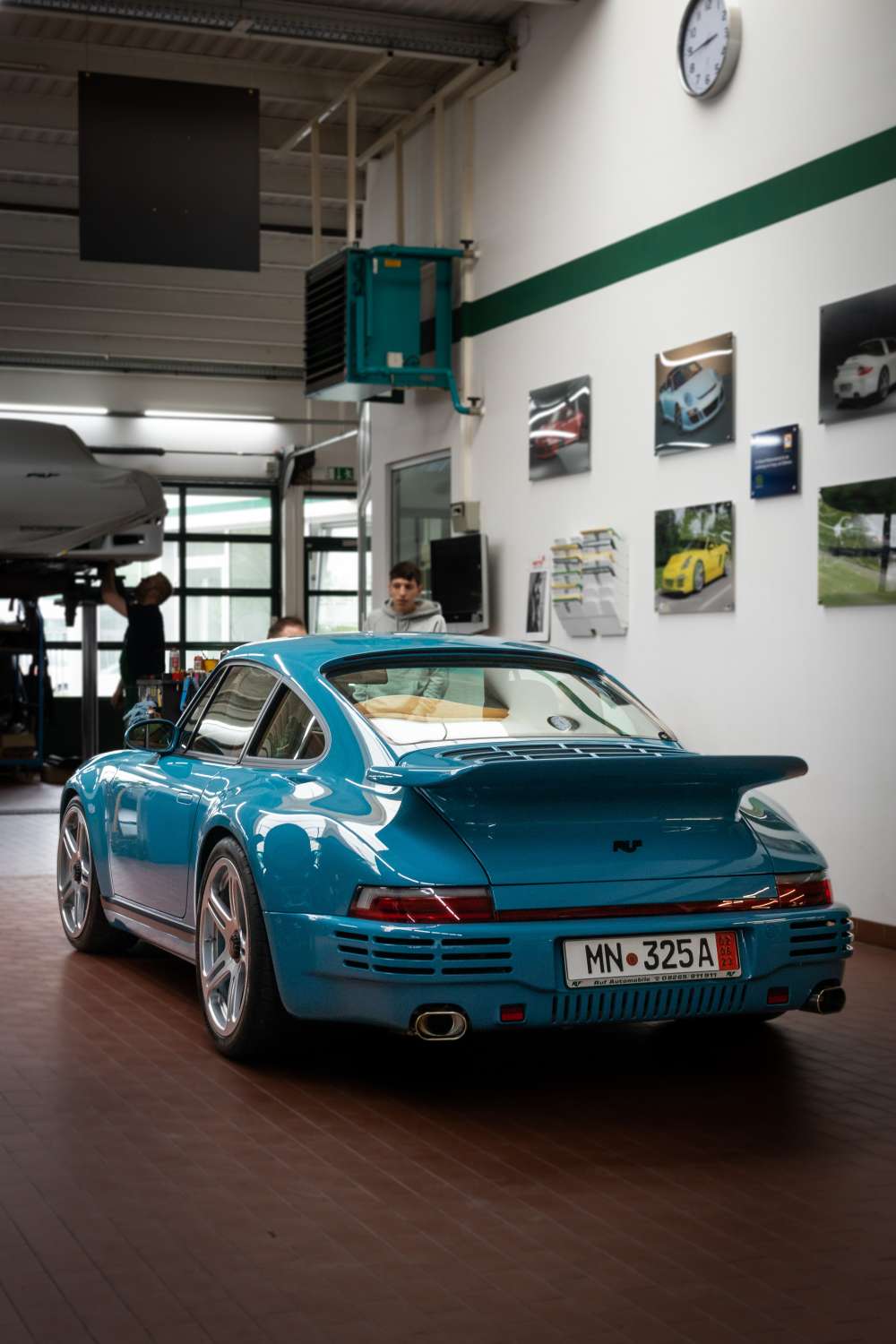
The otherwise RUF maxim of understatement is clearly evident when looking into the interior. Where touchscreens and eccentrically designed levers for automatic transmissions dominate nowadays, RUF consistently goes a different route. For example, there is no radio. However, customers do not have to do without music. A Bluetooth interface allows music streaming from a smartphone. In addition, manual gearboxes are used in the new CTR and SCR. ABS and traction control are the only driving aids.
The family business RUF Automobile employs a total of 60 people. This small team produces up to 30 cars per year and also carries out restorations and service. Particularly impressive: RUF does almost all the work in-house. In addition to production, development and engine construction (including dynos), RUF also has its own saddlery. The Lollipop seats of the current RUF CTR Anniversary/SCR, for example, are an in-house development.
If you have the opportunity to see the production at RUF in person, you will immediately recognize the level at which work is done in Pfaffenhausen. Be it the interior quality, bodywork, paint or the engineering – at RUF everything is high-end.
Painting is also done in-house at RUF Automobile. And the quality of the work is simply impressive. A RUF SCR in Martini livery stands in the preparation hall. The fine lines in three color tones are not stickers painted in. Instead, each individual contour is masked by hand and then painted. They run across several body panels and have such sharp, accurate edges as if they were printed. We have rarely seen such precision. It’s no wonder that an average of 200 working hours are required before the body and paint of new RUF vehicles are perfect. By the way, the color can be chosen completely individually as desired. There are no limits here.
Towards the end of a very exciting and impressive day in Pfaffenhausen, the hallowed halls of the Ruf family were opened to us. The company’s own museum houses historical treasures that are second to none. For example, there is Alois Ruf’s Porsche 901, nicknamed Quickblau, on display here. This pre-production model is one of the greatest treasures of the family around Alois and Estonia Ruf with their children Marcel and Aloisa. By the way, they all work in the family business. Mother Estonia as manager, son Marcel as engineer and Aloisa as mechanic. True to Alois Ruf’s mantra “My life is my work. My work is my life with family”.
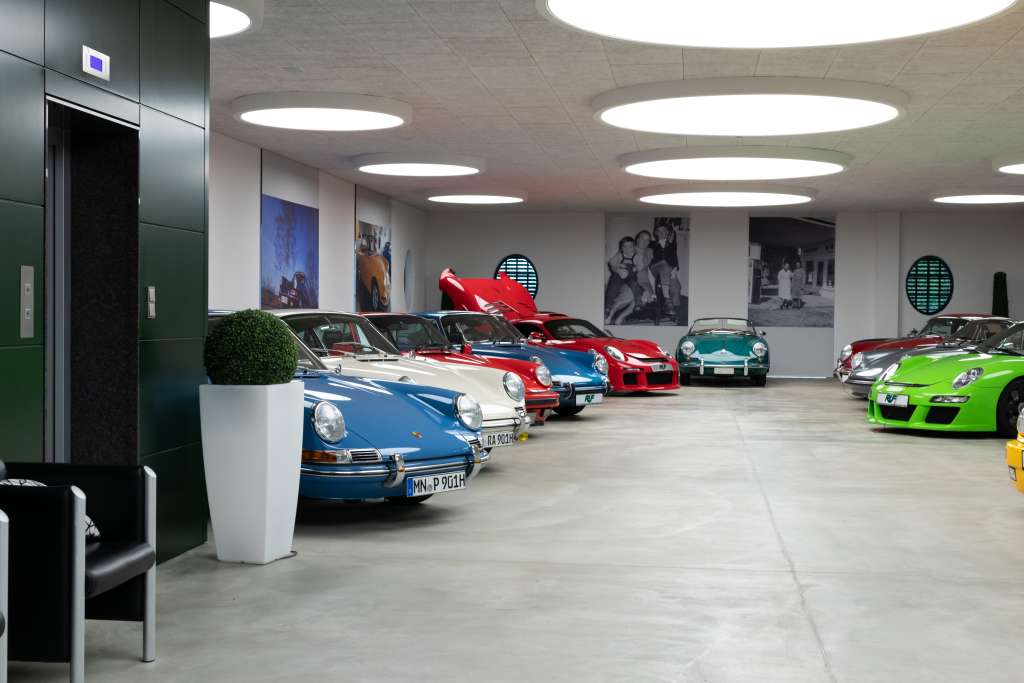

The impressive RUF CTR3 Clubsport is also on display here. Its silhouette is reminiscent of the Carrera GT and 911 GT1. RUF’s top model is uncompromisingly trimmed for performance. From its 3.8 liter biturbo boxer it draws 777 hp and runs up to 380 kph top speed. And the engine compartment also resembles a work of art. A perfect symphony of carbon fiber, precious metals and milled parts manufactured with clinical precision greets us from the opened rear clamshell.
In fact, even the original RUF CTR Yellowbird from 1987 is kept here. Stefan Roser once drove the probably most legendary Nürburgring Nordschleife lap of all times with this RUF CTR. He drifted for almost an entire lap around the green hell, while wearing slippers. The resulting promotional video has been viewed countless millions of times on Youtube. To be allowed to take a seat in exactly this car was something for the personal bucket list. Especially for us from the Gran Turismo generation, this car is simply a legend.
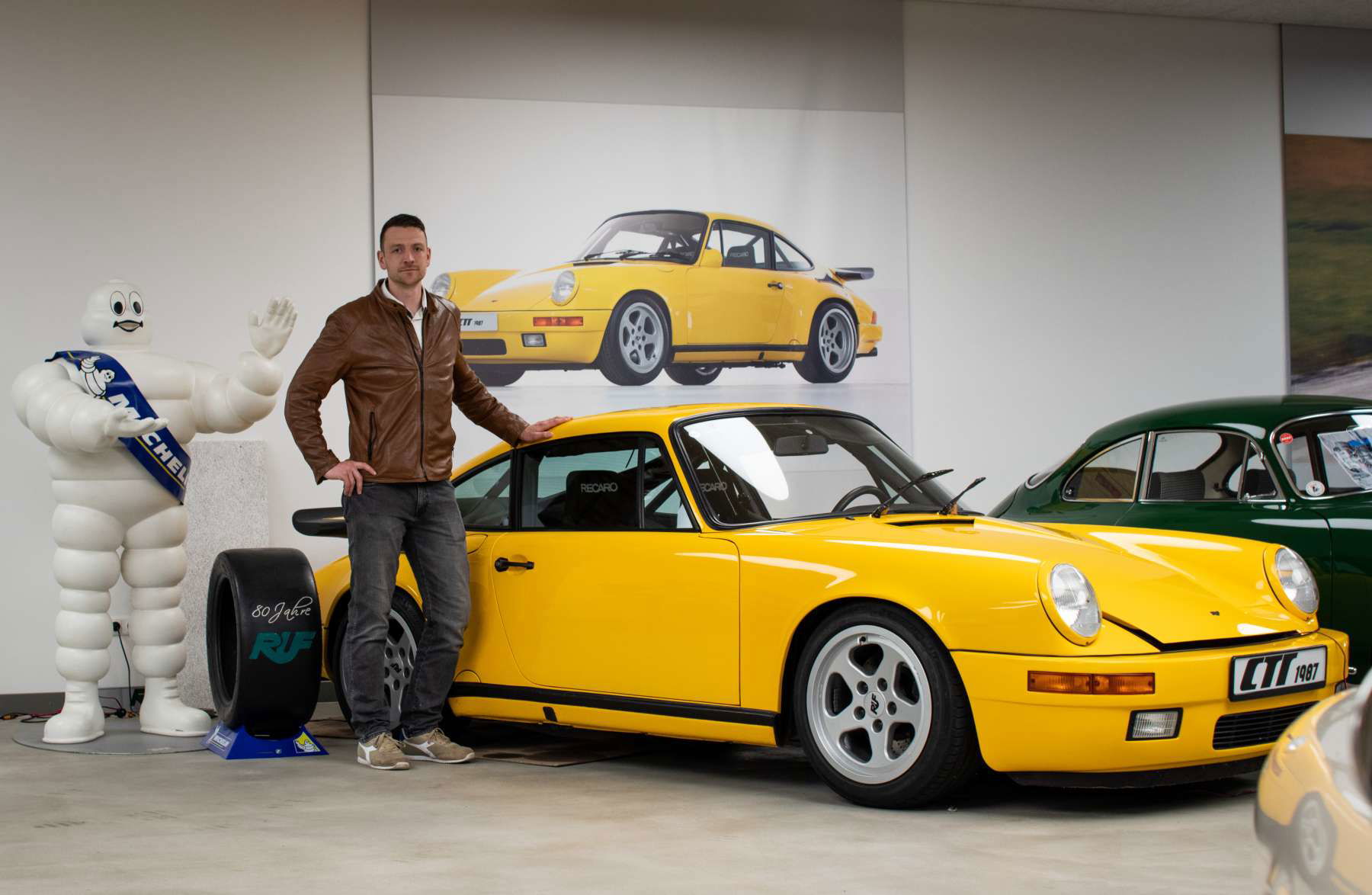
It is well documented that the working atmosphere at RUF Automobile is very family-like. Estonia and Alois themselves also speak of family when it comes to their employees. This obviously also applies to the clientele, the community around RUF. “Anyone who has a RUF gets on the invitation list for what is probably the most exclusive Porsche Rally ever,” Rafael tells us. Every year, the family invites its customers for a drive. Good customers are sometimes accommodated in Alois Ruf Jr.’s parents’ house next to the gas station when they pick up their cars or bring them in for service.
“Pfaffenhausen is probably the place in the world with the highest Porsche-per-capita density.”
Rafael Riethmüller, RUF Automobile
Apparently, this familiar warmth attracts like-minded people. By chance, Christian from England crosses my path in the entrance area. We strike up a conversation. He is picking up his RUF RCT Evo from maintenance today. On his way back home to England, he and his wife will travel through the Black Forest and across France. We chat about our favorite passes and share route recommendations. You can feel that a RUF connects people. Here, employees, family members, but also customers live out their passion. Pfaffenhausen seems to be something like Utopia for Porsche enthusiasts…
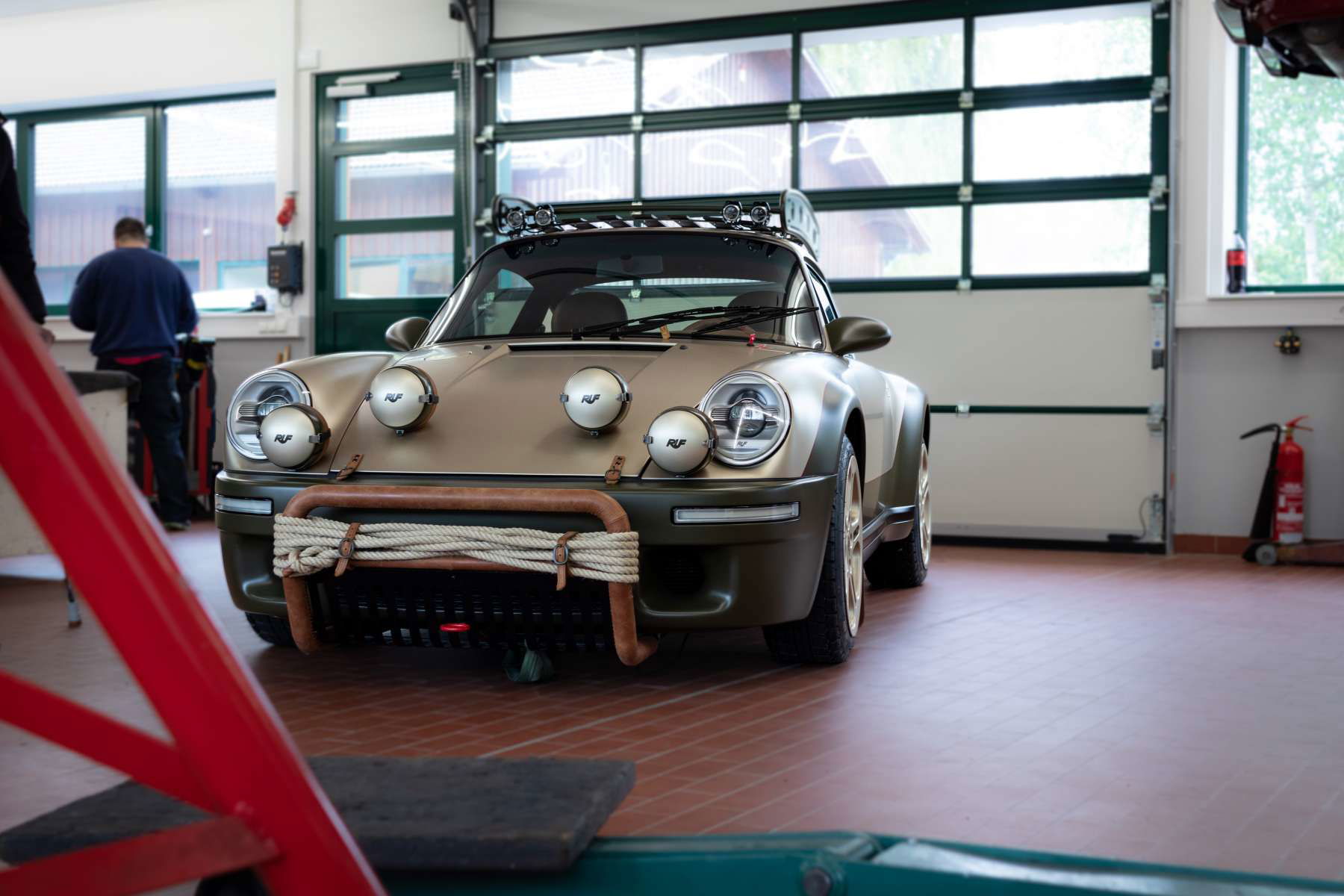
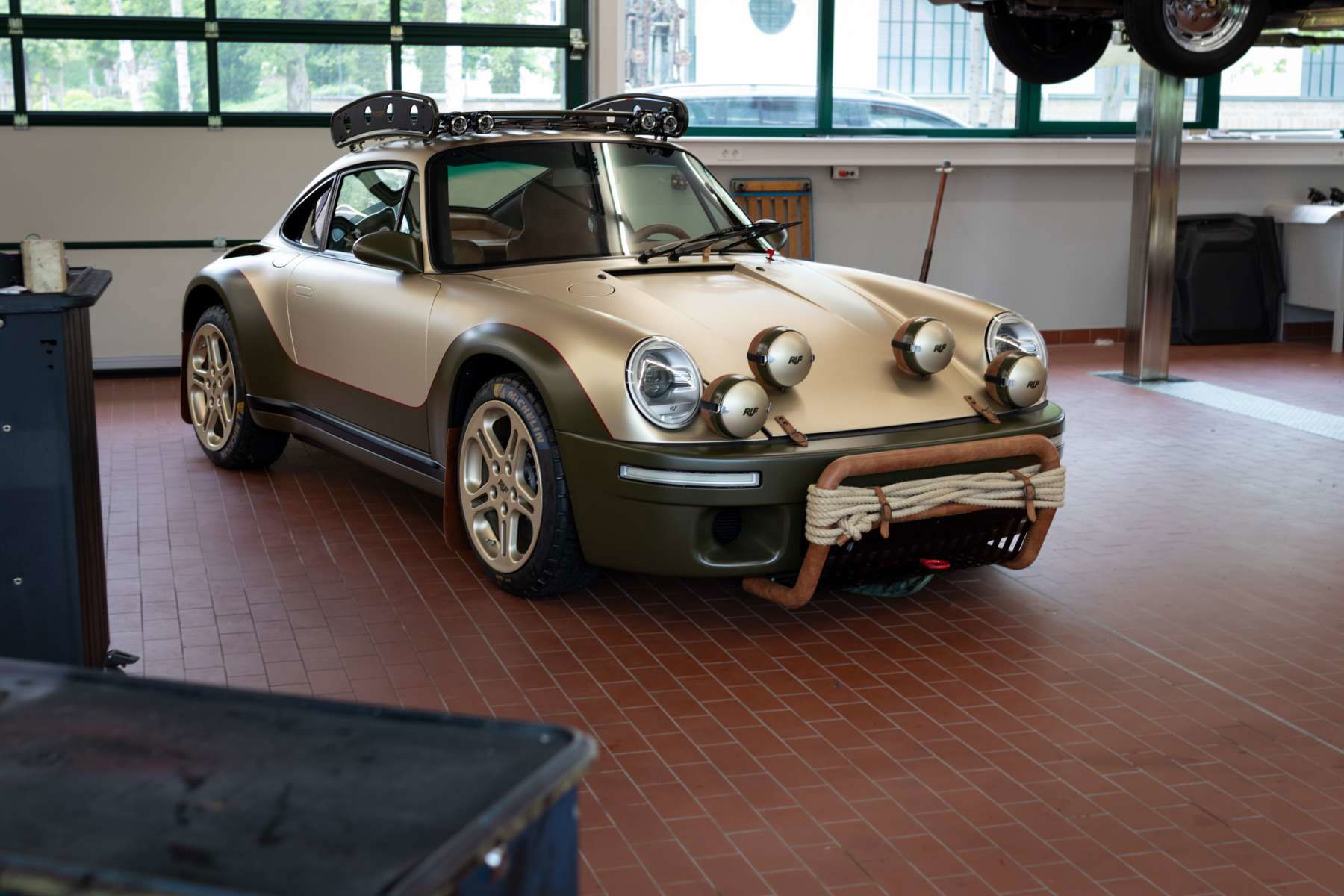
It is a great privilege to be guided through the hallowed halls of RUF Automobile. You notice that the whole company thinks and breathes Porsche and RUF every second. Dreams are created and preserved here. The primary currency at RUF seems to be emotion. Thank you for the insight, we will be happy to come back!
Richard Lindhorst, Elferspot
Elferspot magazine